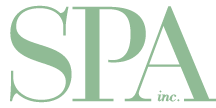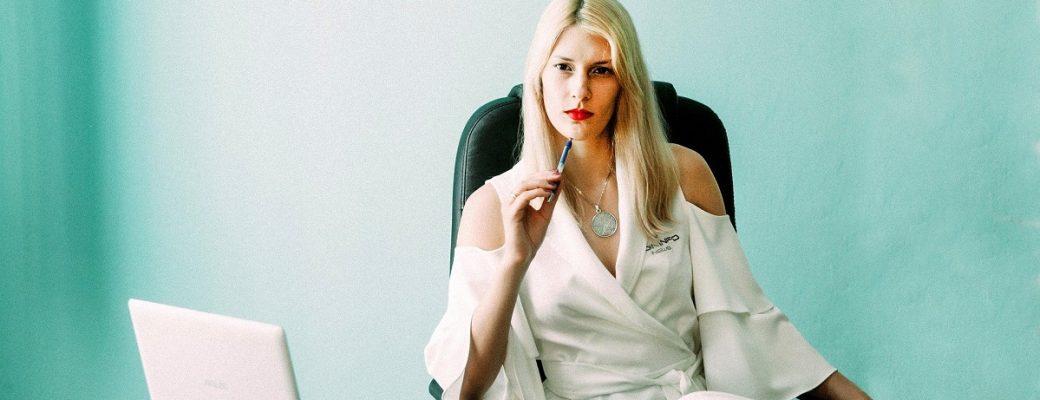In the spa industry, hiring the right employee always benefits owners By Brooke SmithFor employers, hiring a qualified employee can…
Keeping the Faith: Spa directors share how they’re navigating the pandemic
By Wendy Helfenbaum
Shortly after the World Health Organization declared COVID-19 a global pandemic on March 11, spas across Canada began closing down one by one. After all, how can an industry based on human touch operate without significant upheaval in our “new normal” of physical distancing? As appointments were abruptly cancelled, revenue disappeared in an instant, and spa owners and directors have faced unprecedented challenges. Here’s how some of them are handling the crisis, and using this time to focus on the future.
Getting through the roughest times
As government guidelines required immediate shutdowns, the spa industry was suddenly thrown into uncharted territory, says Vivienne O’Keeffe, president of Spa Profits Consulting in Vancouver (and frequent Spa Inc. contributor).
“Many people in our industry were shocked and are still frozen in fear; they don’t think the sun is ever going to come up,” she admits. For weeks, and then months, as economic stimulus information changed daily, spa owners grappled with their new reality.
“Our biggest issue is making rent and equipment payments when insurance isn’t covering any business interruption and we have no revenues right now; we are all in trouble and many businesses may not reopen,” says Alethea Austin, co-founder and CEO of Achieve Wellness Spa in Fort McMurray, Alberta.
Being forced to lay off employees without knowing if or when they could return was gut-wrenching, adds Julie Simcox, director of The Spa at Langdon Hall in Cambridge, Ontario.
“Laying off our staff of 50 was probably the most difficult and emotional part of this whole crisis. We’re more than just colleagues; we are a family,” she says.
Elena Zinchenko, spa director of Ten Spa at the Fort Garry Hotel in Winnipeg (and president of Leading Spas of Canada), quickly realized her spa’s entire digital presence had to be overhauled to reflect the current situation.
“The hardest thing was to revamp the business in a very short time, because normal business tools no longer worked,” she says, citing the spa’s trademark luxurious gift card packaging, which was no longer an option after her entire staff was laid off. Zinchenko added an e-gift card option instead, and started filling online shop orders herself.
Opening channels of communication
Reaching out to clients and finding ways to staying in touch is crucial, Austin advises: “We’re emailing and thanking them, letting them know they can support us through online e-gift card sales for future use, when we all will need it in the future.”
Simcox adds that it’s more important than ever to stay connected with guests. “We contacted all of our upcoming appointments by email and phone about postponing their treatments,” she says.
Whether you’re sending out regular newsletters or e-blasts, or posting encouraging words, wellness tips and how-to videos on your social media channels, people will remember your efforts to engage with them, adds O’Keeffe. “This is the time to bring more value to your clients, and give them strategies to deal with the situation. It’s the innovators who will come out of this stronger, not the operators who have gone silent,” she says. “Now is the time to really cement that personalized relationship and build the trust with your clientele while staying committed to your brand message, because they’re looking for hope.”
When preparing your next blog post, email blast or Instagram story, be mindful about what your readers might be experiencing emotionally; many have lost their jobs or could be overwhelmed juggling remote work and homeschooling, so avoid pushing products, cautions O’Keeffe.
“People need hope and encouragement right now,” she says. “Stress levels are very high, so when you’re communicating on social media, bring them ideas that might help ease the pressure in their life. Then, you can open the door to the natural progression of replenishing their moisturizer or cleanser.”
This is also a great opportunity to remind guests that you’re eager to see them when your business reopens, says Zinchenko, who created Instagram stories introducing staff members and using photos of them at the spa.
“I want to remind customers of their great spa memories that they can hold onto until we reopen, and I’m also checking in on them through social media to ask how they’re doing,” she says. “We get all kinds of skincare questions, so I communicate with them and keep it personal.”
Adding value with virtual content
In addition to developing webinars and other digital content for clients, consider tapping into marketing materials you already have and repurposing them, suggests Denis Laframboise, president of BALNÉA Spa and Thermal Reserve, in Bromont, Quebec.
“Our business is to take care of clients physically, so in times like this where that’s not possible, we cannot be absent from their minds,” he says. “People are at home with their families, and some are experiencing hardships. For us, it was out of the question to sell them things, so we found a way to engage with them using structured messages.”
Laframboise’s team is sharing playlists, recipes and wellness tips, all designed to help people feel good. Weekly wellness goals are pushed out through social media channels and email blasts. Laframboise’s team repurposed existing content, including a 21-day vitality challenge, and added a few new elements, including a contest.
“These initiatives have definitely activated our platform, and we’ve had the most feedback about our playlists,” says Laframboise. “In difficult times, it’s the hope of better times ahead that speaks to everyone, so we’re sharing photos of people enjoying the spa and our chefs cooking, so clients will look forward to coming back to the spa.”
Simcox shares resources that focus on mental health during a time of isolation, such as meditation and yoga apps. “We’re also working on tips for performing home facials, and started a new program with our partner Valmont that allows our clients to replenish their products and get them delivered straight to their door,” she says.
Staying in touch with staff
Don’t forget about your employees, who are likely feeling especially low and uncertain about their futures, adds Zinchenko, who communicates regularly with her staff via email groups. Simcox created a private Facebook group where employees share photos and words of encouragement.
“It’s been a great tool to keep us feeling connected as a family, and we’re also helping staff decipher the numerous government announcements and what they mean to them and their families,” she says. “Our HR department is available by phone or email to assist any staff member with questions or concerns, and we’re also reminding our staff about our Employee Assistance Program, which is free for all staff and their families. We look forward to rehiring all our staff back but in the meantime, don’t let the lines go silent.”
Providing support goes a long way in these challenging times, adds O’Keeffe, who suggests paying special attention to staff who are in crisis. “This where spa directors have an opportunity to step up to the plate and be leaders,” she says. “It’s important to reach out one-on-one, as some people may be really struggling, and you can refer them to the appropriate channel, such as your health benefit plan. And if you can, I would strongly recommend retaining your key personnel and give them broad projects, whether it’s ecommerce, a newsletter or videos if you don’t have time to do it yourself.”
Adopting a positive outlook
O’Keeffe advises spa owners and directors to view this difficult period as a time to up your game. “Every crisis holds the seeds of opportunity, and industry innovators see it as a time to strengthen, organize and do projects that they haven’t had the bandwidth to do earlier,” she says.
“You now have the time to get the expertise, and psychologically, people are much more apt to listen to experts that really know what they’re doing. I think we’re going to see a whole shift in consciousness. You can choose to put your head in the sand until everybody goes back to work, or you can be proactive and get ready.”
For spas that have not updated their policies and procedures recently, now’s the chance to boost training plans and improve operational protocols, adds O’Keeffe.
“Strengthen those areas of your business you never had time to do before: Organize your office system, rethink your front desk operations and guest amenities operations. We’re all looking for ways to save money, be more efficient and make our businesses better. Don’t just sit and wait.”
Pushing for increased hygiene and infection control
The COVID-19 crisis is taking the need for best practices in sanitation to the next level. “People are going to be very cognizant, and they’re going to want to see that you are taking responsibility for active infection control in your facility,” O’Keeffe notes.
Highlighting specific new infection control measures you’ve put in place to ensure safety is another way to reach out to customers. For example, providing information that describes how instruments, treatment rooms and shared surfaces are constantly sterilized between guests will help instill renewed confidence in your wellness centre, and encourage clients to visit upon reopening.
“As a Quality Assured spa, sanitization was always very important to us,” says Austin. “We will keep up our very stringent cleaning and sanitization protocols, and will implement hourly surface cleaning of frequently touched surfaces such as pin pads and door handles.” Additional areas that should now be regularly sanitized include the front desk, credit card machine, computer keyboards, phones and common area surfaces.
“Hygiene has always been a priority for us; we have a team of seven people cleaning every day, disinfecting the sauna, beanbags, bathrooms and all surfaces,” says Laframboise.
Simcox, a board member for Leading Spas of Canada, adds that her spa takes infection control very seriously, and works with public health inspectors to develop protocols.
“We make sure all porous items – like buffers, nail and foot files – are disposable and not reused,” she explains. “The bottle of nail polish even goes home with the client and each staff member owns multiple sets of implements, so there is no rushing through the cleaning in between appointments.”
Simcox adds that further discussions regarding the Quality Assurance Program will be discussed in the coming months, with new routines arising based on best practices to ensure guest and staff safety.
Making up for lost time
Spa owners may be concerned that guests will lose the joy of going to the spa like people temporarily lost the joy of flying after 9/11, says Laframboise. “We have no crystal ball and no idea if this situation will change individual behaviour to the point of not wanting to be close to 10 other people in a spa,” he admits.
It could even feel as if you’re opening a whole new business, but with missed birthdays, holidays and other special occasions, spa-goers will be looking to make up for lost time, so help them by offering content and promotions that cater to this emotion, suggests O’Keeffe. “The spa industry has weathered many, many storms and we need to pull back on that as a foundation,” she says. “We are resilient, and we will get through this.”
Find more inspiration here:




